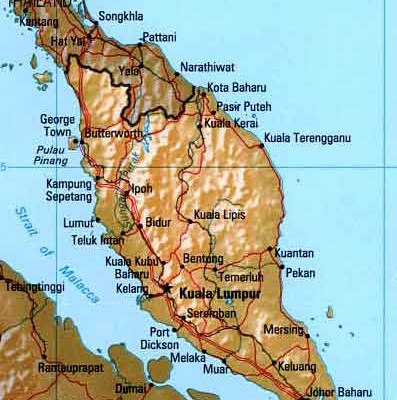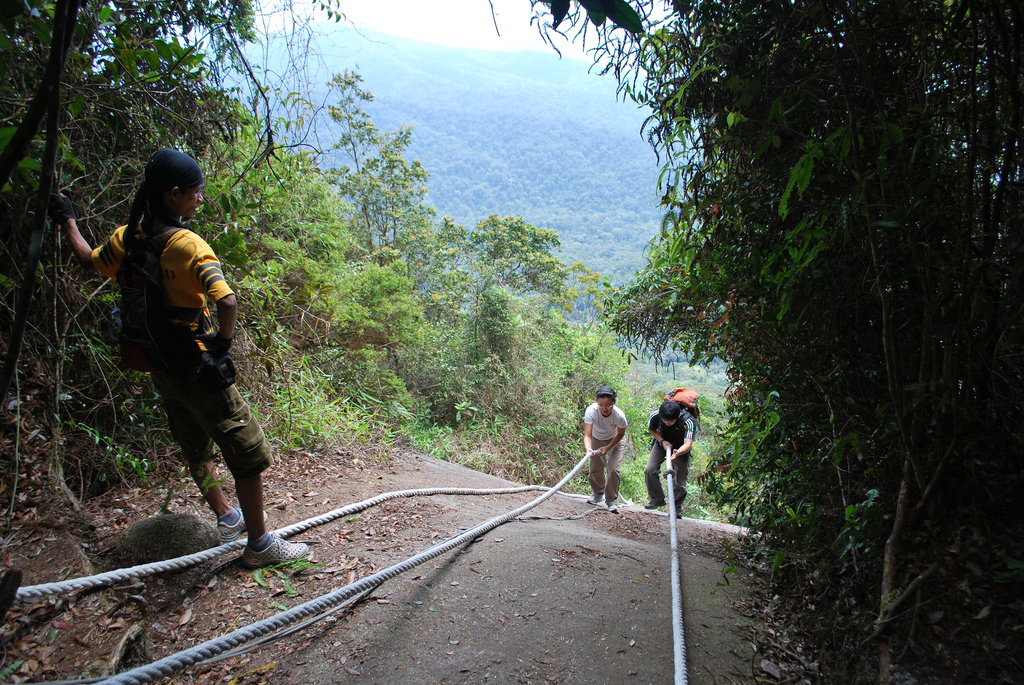By: Melissa Lin
 The Southern part of West coast of peninsular Malaysia is composed of the states Negeri Sembilan, Melaka and Johor. The Straits of Melaka coastlines stretch along these states. Johor is framed on one side by the Straits of Melaka, the other side being a coastline facing the South China Sea.
The Southern part of West coast of peninsular Malaysia is composed of the states Negeri Sembilan, Melaka and Johor. The Straits of Melaka coastlines stretch along these states. Johor is framed on one side by the Straits of Melaka, the other side being a coastline facing the South China Sea.
Old world fishing villages and natural nooks of nature here are perfect for kicking back and soaking in the tranquil atmosphere of the sea. The South is home to the unique Minangkaubau influenced culture in Negeri Sembilan, historical attractions in Melaka as well as cultural diversity and entertainment in the metropolis of Johor.
Negeri Sembilan Nexus
Negeri Sembilan, about 50 km south of Kuala Lumpur possesses a unique culture, known for its strong Minangkabau influences. The Minangkabau migrated to Malaysia from West Sumatra in Indonesia centuries ago and their traditional houses have characteristic sweeping roof peaks, shaped after buffalo horns. The Minangkabau practice the matrilineal social system, with property and land being passed down from mother to daughter.
At Padang Lebar in Negri Sembilan, one may experience traditional village life at one of the village home stays and enjoy the surrounding verdant greenery.
A popular getaway from the city is the seaside town of Port Dickson. There are several beaches to explore here. Museums in Negeri Sembilan include the Seri Menanti Royal Museum and the Army Museum.
Magic in Melaka
Melaka, named as a UNESCO world heritage site, is one of the most popular tourist destinations in Malaysia. Once fought over by the Dutch, Portuguese and English for being a strategic and important port, this city has some of the country’s most beautiful historic buildings that hark back to Malaysia’s colonial past. These include the Dutch built ‘red buildings’ of the Stadhuys, Bell tower and Christ Church, characteristic of Dutch architecture at the time.
Places of worship, and traditional shop houses are also part of the quaintness and charm of Melaka’s landscape. Other attractions include Jonker Street, where one can savor the local specialties such as Chicken ball rice and Chendol, a sweet dessert made from coconut milk. Read what to do, where to stay and what to eat in our Melaka travel guide.
From Asahan Melaka, one can make her way down (or rather ‘up’) to the legendary Mount Ophir, or Gunung Ledang, said to be the home of the fairy princess from the legend ‘Princess of Mount Ophir’.
Scaling the heights of Mount Ophir is an unforgettable affair with wild orchids, exotic birds, rainforest and breathtaking views of the surrounding areas.
Johorean wilderness
Johor Bahru borders Singapore and is one of the biggest industrial centers of the country. The city is a metropolis that receives a steady influx of visitors from Singapore who come to shop and dine. Apart from a couple of museums, the nightly second hand market in the city centre and some golf or water sporting activities, there is little here to attract the more adventurous traveler. Outside of Johor Bahru is where the real magic of Malaysia’s natural beauty unfolds.
Kukup is a little fishing village built into the sea. Kukup Island is 800 m away and is the second largest Mangrove island in the world, 27 different species of Mangrove having been identified. This island also known notoriously as a hideout for pirates in olden times.
Some of the country’s most beautiful Islands are found in Johor. The popular Tioman island possesses paradise like beaches, resplendent with crystal clear blue waters, white sand and tropical jungle. One may not only access Tioman from Mersing, but may also enter The Endau Rompin National park from here. This National park is a area of one of the world’s oldest rainforest, with rich and diverse plant and wildlife, as well as volcanic rocks dating back 240 million years.
Exploring the Southern charm of Malaysia uncovers the matrilineal tradition of the influential Minangkabau in Negeri Sembilan, the wondrous heights of Mount Ophir and the second largest Mangrove swamp island in the world!















